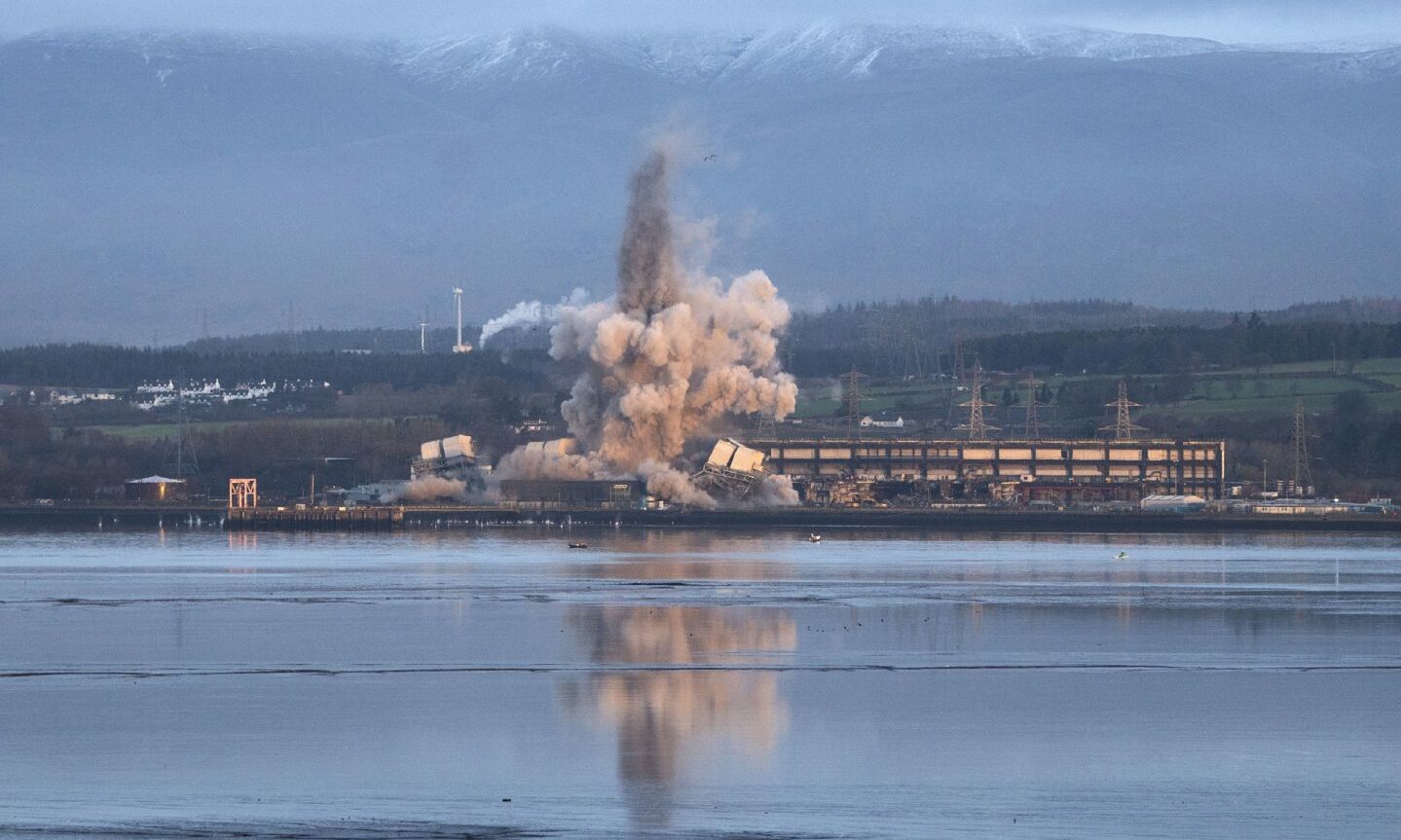The Longannet chimney demolition marks the end of an era – for Fifers and for the country.
Scottish Power razed the final remnant of Scotland’s last coal-fired power station to the ground at 9am on Thursday December 8.
As expected, the demolition process raised a large dust cloud, with the detonation itself felt as far away as Dunfermline and Linlithgow.
The debris will take around 45 minutes to clear from the Kincardine site.
The grand explosion was weather dependent. But as promised, it proved to be spectacular sight.
Communities around the Forth gathered to watch the stack come down while hundreds followed the demolition live on The Courier YouTube channel.
Onlookers watched from a specially-commissioned boat sailing from South Queensferry early in the morning.
VIPs invited into the former power station for the event included First Minister Nicola Sturgeon.
ScottishPower CEO Keith Anderson was also there to watch the stack fall. His company have moved away from coal power in recent years, backing renewables as the firm works to cut carbon emissions across the board.
But the Longannet chimney demolition is a historic and powerful reminder of Fife’s industrious coal past.
We have been covering the power station for decades, as captured in 20 images from the site’s past.
Why does the Longannet chimney demolition matter?
In its prime, the Longannet site was the second-largest coal-fired power station in the UK and one of the largest in Europe.
It had an installed capacity of four 600MW units. That could produce enough electricity to meet the needs of two million people.
📣 We projected the Global Warming Stripes on Scotland’s last coal-fired power station, Longannet, ahead of its demolition this month 🌍
Additional information can be found here: https://t.co/oO7cI5znoV#ClimateChange #betterfuturequicker #TogetherForOurPlanet pic.twitter.com/cUFg1vvq8S
— ScottishPower (@ScottishPower) December 6, 2021
When the ScottishPower plant closed in March 2016 it was a hammer blow to the Fife economy and surrounding communities.
Owners Scottish Power took the first steps in its eventual demolition in July of the following year.
Only four months on from the day the Kincardine station shut down, locals were already meeting to discuss the impact on the area and discussing the plant’s future.









